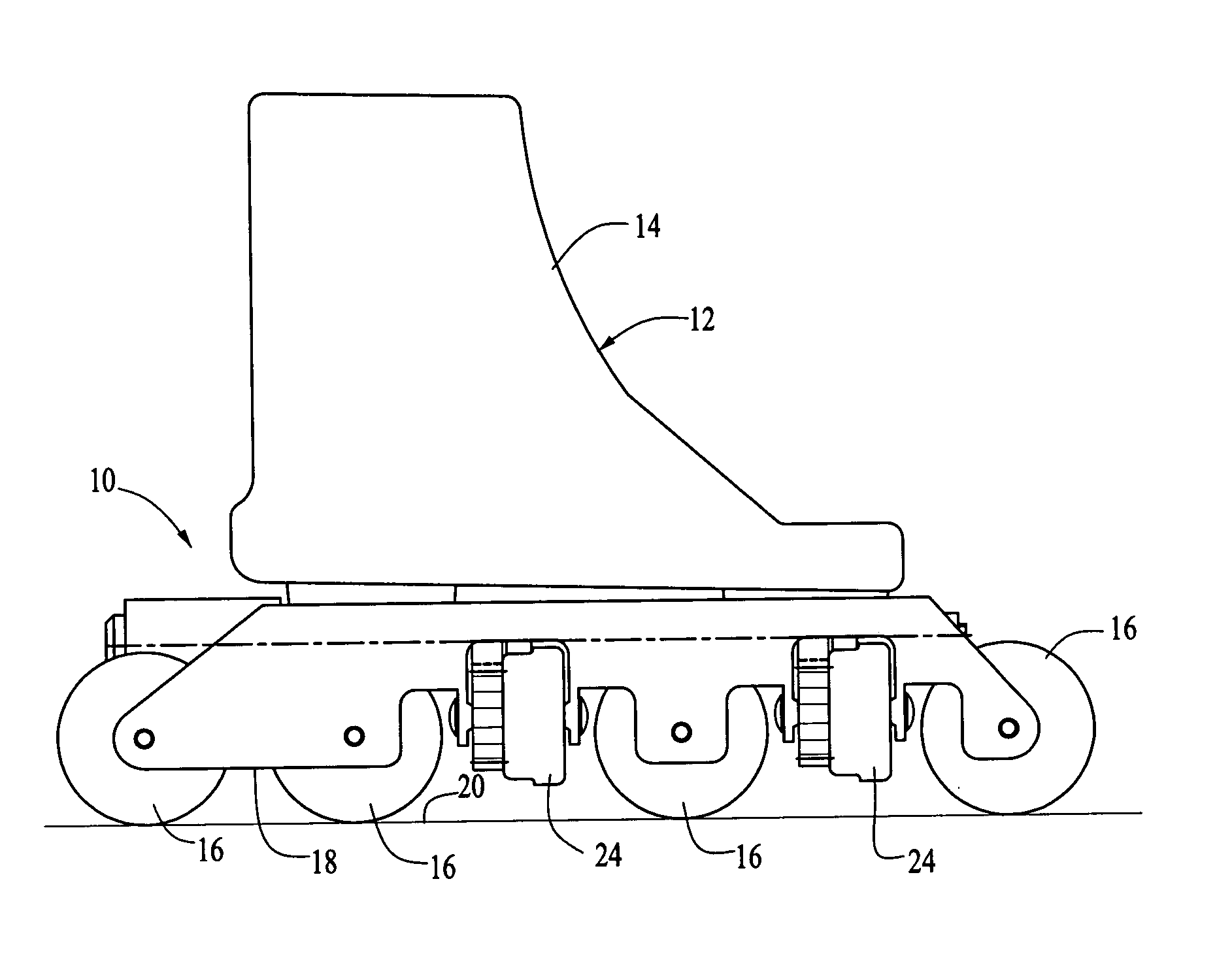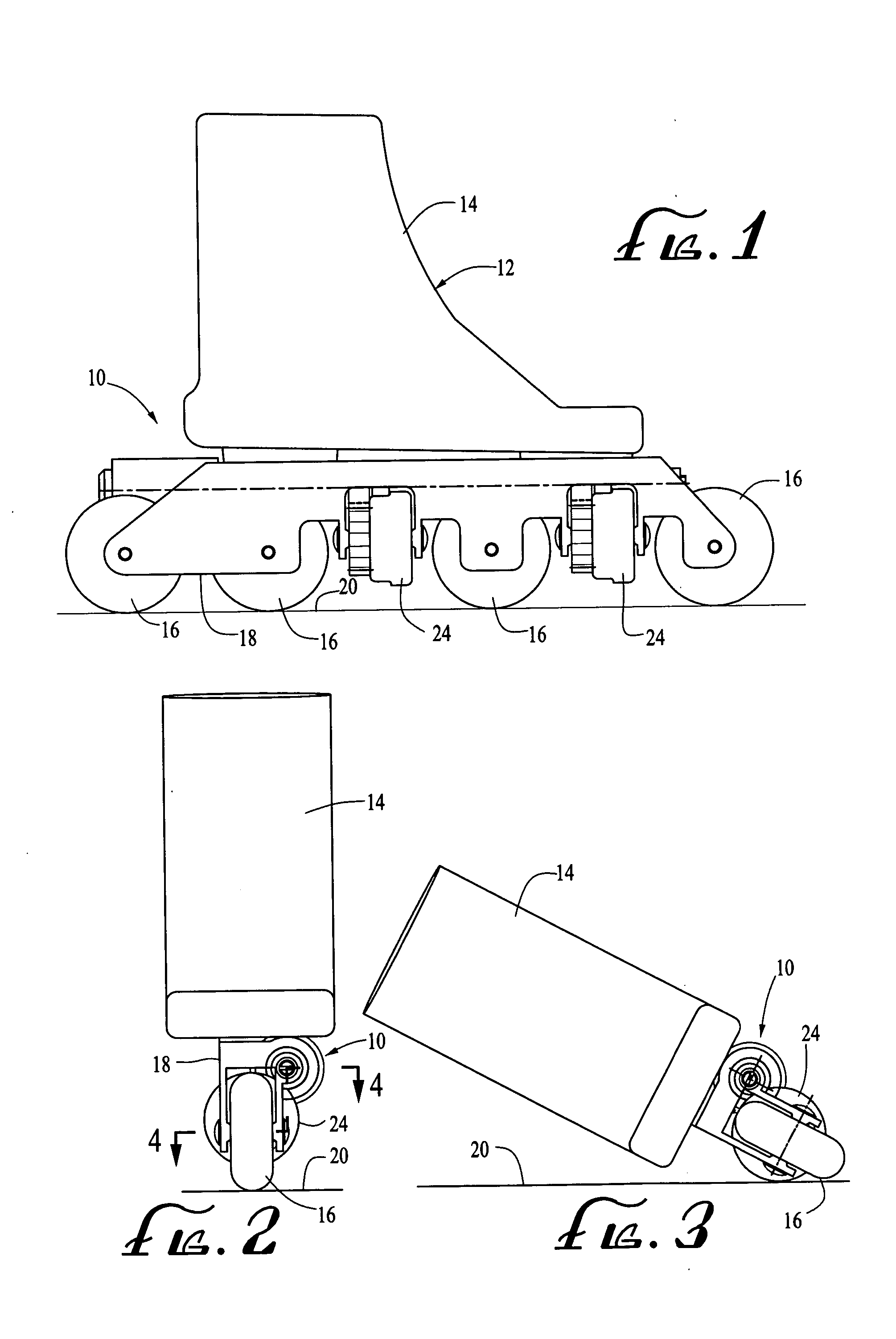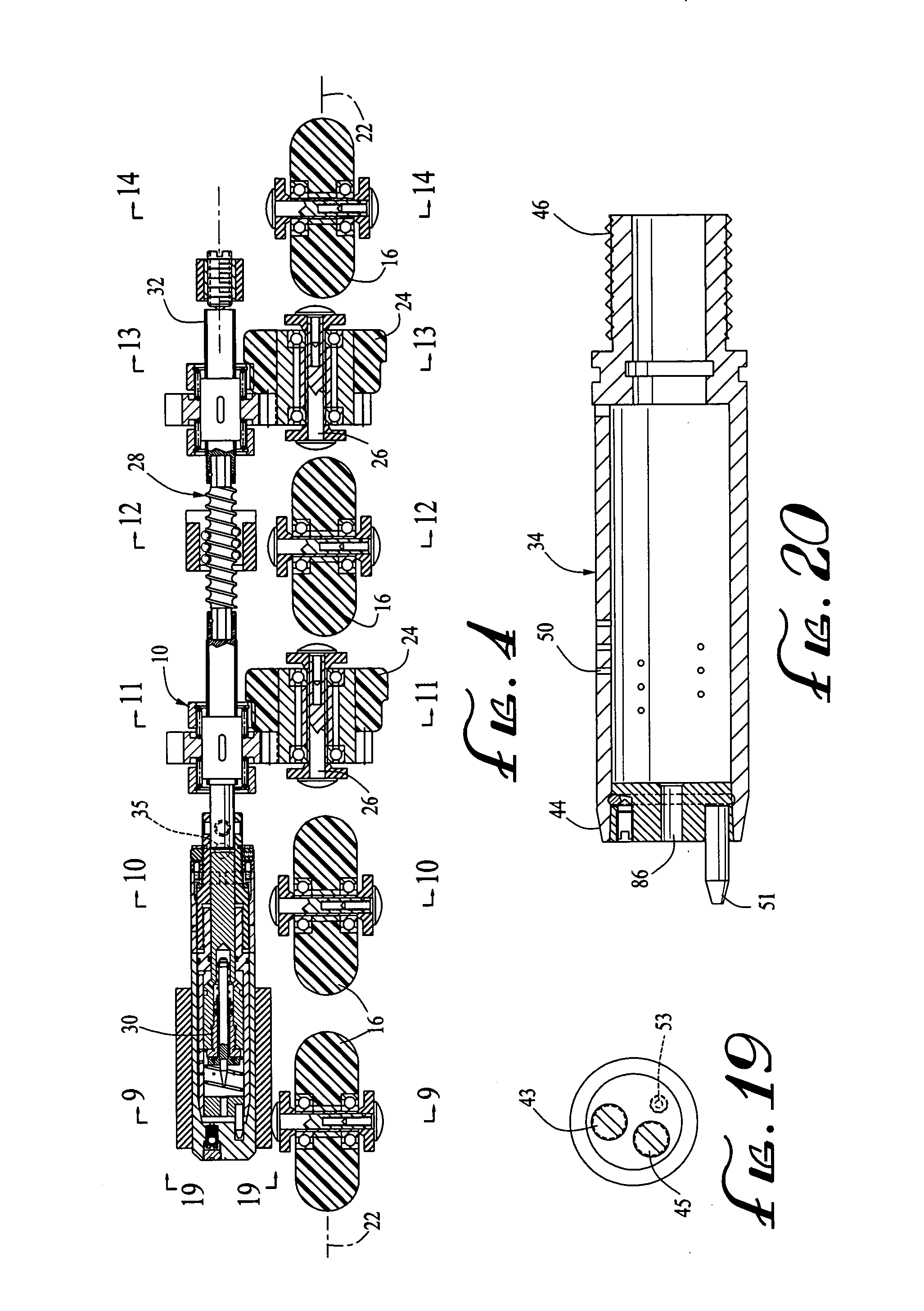In-line roller skate braking mechanism
a braking mechanism and in-line roller skate technology, applied in the field of skates, can solve the problems of inability to stop efficiently, inability to quickly and efficiently stop and inability to stop quickly and efficiently like an in-line roller ska
- Summary
- Abstract
- Description
- Claims
- Application Information
AI Technical Summary
Benefits of technology
Problems solved by technology
Method used
Image
Examples
example
[0059] In one illustrative example of the invention, a boot 14 of a size 10 has skating wheels 16 with diameters of 72 mm. The diameters of the braking wheels 24 are 57 mm. The distance between the braking wheels 24 and the base skating surface 20 is 14.85 mm, the first piston housing section side wall apertures 50 have diameters of 0.79 mm and are 18 in number. The second piston housing section side wall apertures 52 have diameters of 1.6 mm and are 6 in number. The diameter of the piston housing end wall aperture 86 is 2.78 mm. The piston inlet channels 58 have a diameter of 1.6 mm and are 6 in number.
PUM
 Login to View More
Login to View More Abstract
Description
Claims
Application Information
 Login to View More
Login to View More - R&D
- Intellectual Property
- Life Sciences
- Materials
- Tech Scout
- Unparalleled Data Quality
- Higher Quality Content
- 60% Fewer Hallucinations
Browse by: Latest US Patents, China's latest patents, Technical Efficacy Thesaurus, Application Domain, Technology Topic, Popular Technical Reports.
© 2025 PatSnap. All rights reserved.Legal|Privacy policy|Modern Slavery Act Transparency Statement|Sitemap|About US| Contact US: help@patsnap.com



